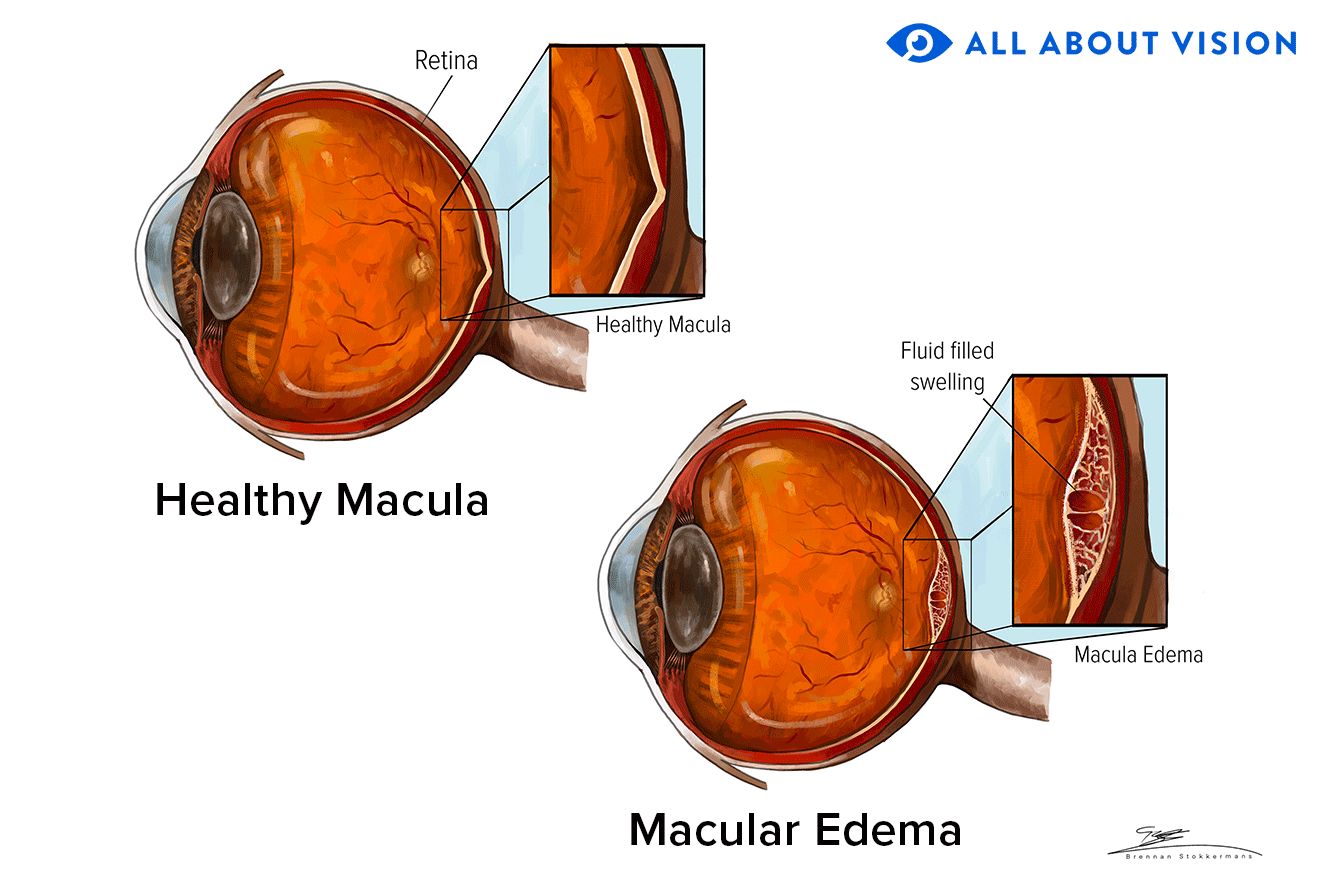
Macular edema and retinal edema are serious eye conditions that affect vision by causing swelling in the retina. The retina, located at the back of the eye, is essential for converting light into visual signals for the brain. Macular edema occurs when fluid accumulates in the macula, the part of the retina responsible for sharp central vision. Retinal edema, on the other hand, refers to swelling that can occur in any part of the retina. Both conditions, if untreated, can lead to significant vision loss. Early detection and treatment are crucial to prevent permanent damage.
What Is Macular Edema and Retinal Edema?
Macular Edema
Macular edema specifically affects the macula, a small but critical area in the retina responsible for high-resolution vision needed for reading, driving, and recognizing faces. Fluid leakage from damaged blood vessels causes the macula to swell, leading to distorted or blurred central vision.
Retinal Edema
Retinal edema refers to swelling anywhere in the retina, which can result from various conditions. While macular edema is a subset of retinal edema, retinal swelling in other areas may not always impact central vision as severely. Both conditions share similar underlying mechanisms, such as fluid accumulation due to vascular damage or inflammation.
Causes of Macular and Retinal Edema
Diabetes-Related Causes
Macular edema is often linked to diabetes through a condition called diabetic retinopathy. Chronic high blood sugar damages the tiny blood vessels in the retina, causing them to leak fluid into the surrounding tissue. This leakage is particularly harmful when it occurs in the macula, leading to diabetic macular edema (DME).
Non-Diabetic Causes
Retinal and macular edema can also develop due to other conditions. Retinal vein occlusion, a blockage in the veins that carry blood away from the retina, can lead to fluid buildup. Inflammatory conditions like uveitis, eye trauma, or complications from surgeries such as cataract removal can also result in retinal swelling.
Early Signs and Symptoms to Watch For
Macular and retinal edema often develop gradually, making early symptoms easy to overlook. Common warning signs include:
• Blurred or distorted central vision.
• Difficulty focusing on fine details, such as text or facial features.
• The sudden appearance of dark spots or floaters in the field of vision.
Because these symptoms can progress slowly, regular eye exams are essential for early detection, especially for individuals with risk factors like diabetes or high blood pressure.
Risk Factors for Macular and Retinal Edema
Diabetes Management
Poor blood sugar control significantly increases the risk of diabetic retinopathy and macular edema. Individuals with type 1 or type 2 diabetes are especially vulnerable if their glucose levels are not well-regulated over time.
Treatment Options for Macular and Retinal Edema
Anti-VEGF Injections
Anti-vascular endothelial growth factor (anti-VEGF) drugs block abnormal blood vessel growth and reduce fluid leakage in the retina. Administered as injections directly into the eye, these treatments are typically given in a series over several months.
Focal Laser Therapy
Laser therapy involves using targeted light to seal leaking blood vessels and reduce swelling. While the procedure can create small blind spots, it helps prevent further vision loss and may stabilize or slightly improve vision.
Living with Macular and Retinal Edema
Adapting to macular or retinal edema involves learning to manage changes in vision and maintaining a proactive approach to eye care. Tools like magnifiers, screen readers, or adjusted lighting can help people adapt to vision loss. Regular follow-ups with an eye doctor are essential to monitor treatment progress and adjust strategies as needed.